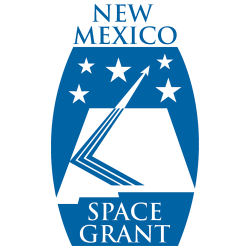
2019 SUPPORTED RESEARCH & EDUCATION
Integrating HiRISE and MOLA data products for reliable topographic modeling of the Mars surface
Principal Investigator: Dr. Ahmed Elaskher
Affiliation/Dept.: New Mexico State University, Engineering Technology and Survey Engineering
Description: For many years, Mars surface has been a mystery for scientists. Lately with the help of geospatial data and photogrammetric procedures researchers were able to capture some insights about this planet. Two of the most imperative data sources to explore Mars are the HiRISE stereo images and using them in exploring the Martian surface. This proposal outlines the timeframe, procedure, deliverables and estimated cost for the photogrammetric processing of HiRISE and MOLA data.
This project will contribute toward NASA’s goals of studying and characterizing planetary surfaces. The fund will allow NMSU to initiate institutional capacity in processing planetary data and start collaborative relationships with NASA centers. It will also leverage the NMSU competence in seeking future funds from other NASA sources, NSF and NGA. The project will be carried out by NMSU faculty and students. The current roster of the faculty in the NMSU has a wide range of backgrounds that would greatly facilitate the implementation of this project and ensure timely realization of the proposed timetable.
Improving human-robot interaction efficiency during robot mode-swaps to support safety, sustainability, and success of space missions
Principal Investigator: Dr. Marlena Fraune
Affiliation/Dept.: New Mexico State University, Department of Psychology
Description: New robotic technology is critical to support future space missions. NASA is currently developing intelligent robots (e.g., Astrobee) to increase the safety, sustainability, and success of space missions. Astrobee is unique in that it can operate in different modes (i.e., controlled by an astronaut user, teleoperated by mission control, autonomous) to support different mission activities and needs. However, switching modes might incite confusion over the robot’s capabilities and whether it is being remotely operated or acting autonomously. Consequently, co-located astronauts may have difficulty understanding when and how to interact with their robot teammate, particularly when human assistance is required.
Protective Ceramic Coatings by Aerosol Deposition of Extraterrestrial Regolith
Principal Investigator: Dr. Paul Fuierer
Affiliation/Dept.: New Mexico Institute of Mining and Technology, Materials and Metallurgical Engineering
Description: NASA is developing technologies to support lunar and planetary surface exploration, including the use of local resources for construction, repair and protection of habitats, transport vehicles, etc. This NMSGC project involves aerosol deposition (AD) to manufacture ceramic coatings using extraterrestrial regolith (dust) simulant. AD is a unique spray process for building nanostructured ceramics with full density and superior performance. On earth, AD must be done in a vacuum chamber. In space, the universe is the chamber, and coating large surfaces is conceivable. The goal of this project is to deposit, for the first time, AD films made of the complex silicate minerals and glass found on lunar and Martian surfaces. This will involve acquisition of regolith simulant, determination of AD process parameters and powder conditioning for success, and characterization of the coatings. The findings of the research will prove the viability of AD as a materials coating solution in space, define the processing parameters for this ceramic material, and identify applications for novel coatings.
